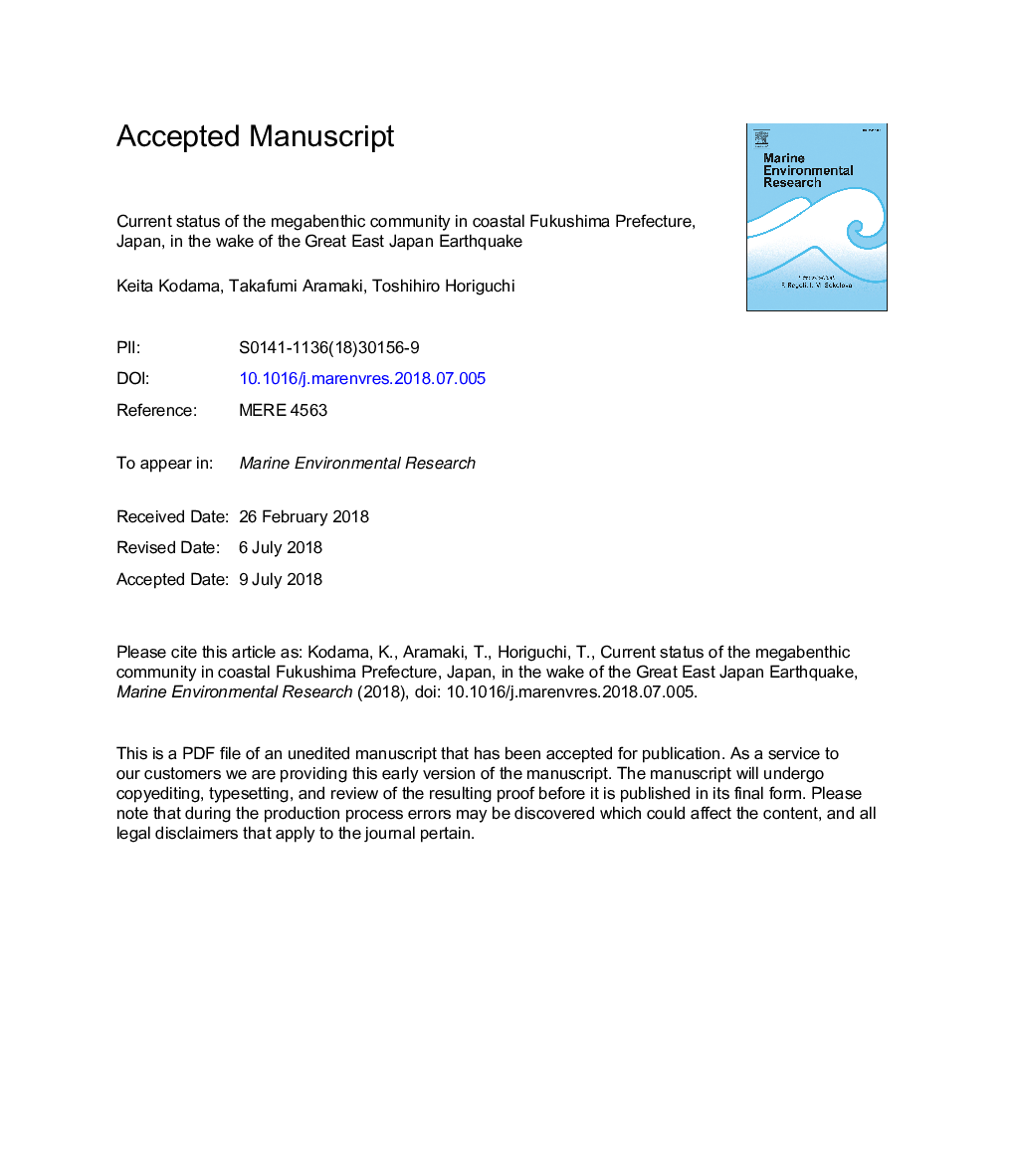| Article ID | Journal | Published Year | Pages | File Type |
|---|---|---|---|---|
| 10223923 | Marine Environmental Research | 2018 | 47 Pages |
Abstract
We conducted fisheries-independent bottom-trawl surveys along the coast of Fukushima, Japan, from 2013 to 2017 to study the megabenthic community structure after the 2011 earthquake, tsunami, and nuclear disaster. Although we observed no substantial changes in biodiversity, total abundance and biomass fluctuated among years, primarily because of temporary increases in the abundance or biomass of small shrimp and squid, or variations in abundance or biomass of mid-sized fishes (i.e. puffers and flatfishes) and large elasmobranchs. Echinoderm abundance and biomass decreased in all areas. Crustacean abundance and biomass were extremely low in the central and southern offshore transects. Our results suggest that there has been no recognizable recovery in the megabenthic community, and megabenthic species off the coast of Fukushima might have been experiencing reproductive or recruitment failure. Further research is needed to reveal the causal factors behind changes in these megabenthic communities.
Keywords
Related Topics
Physical Sciences and Engineering
Earth and Planetary Sciences
Oceanography
Authors
Keita Kodama, Takafumi Aramaki, Toshihiro Horiguchi,
